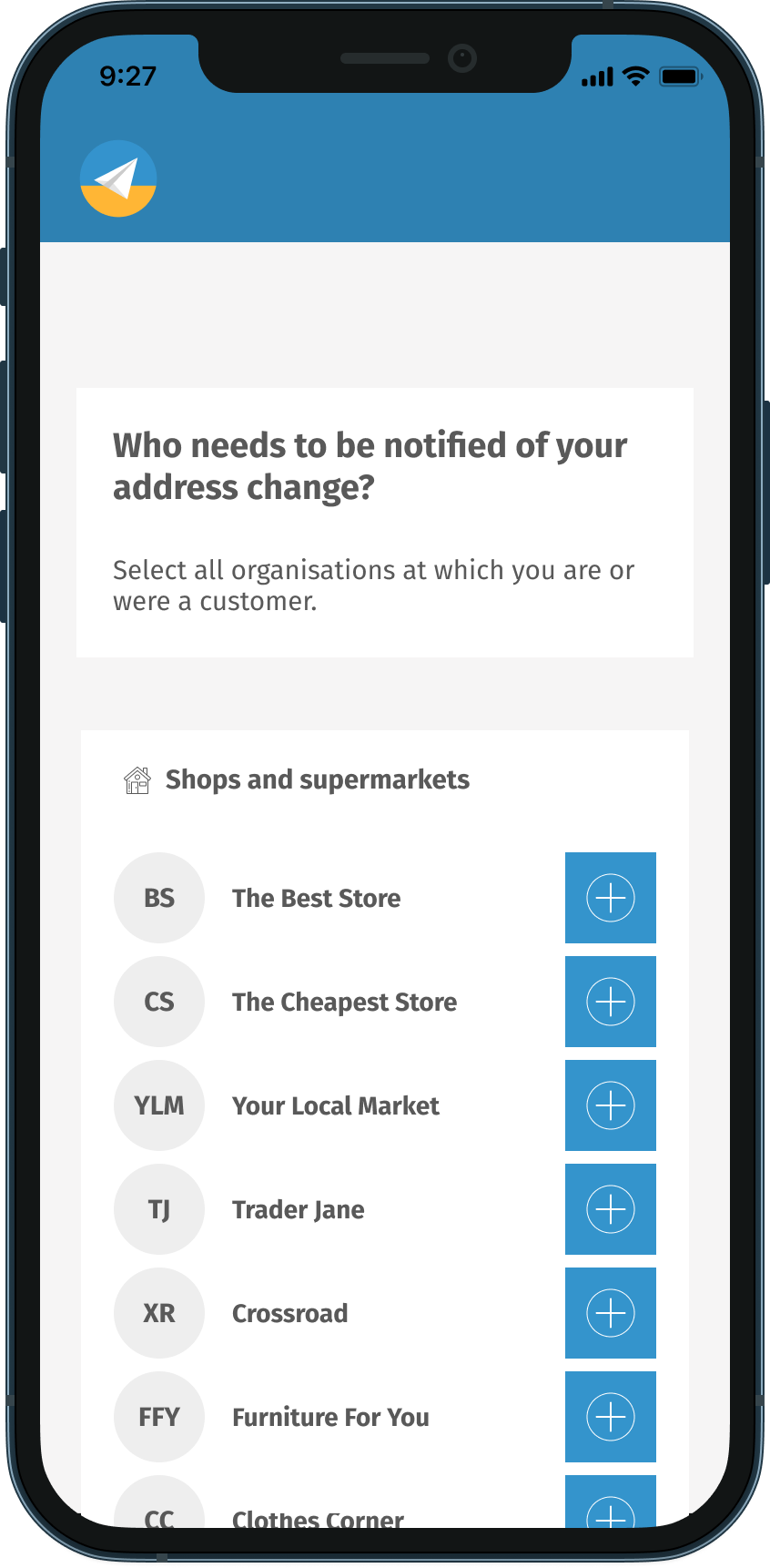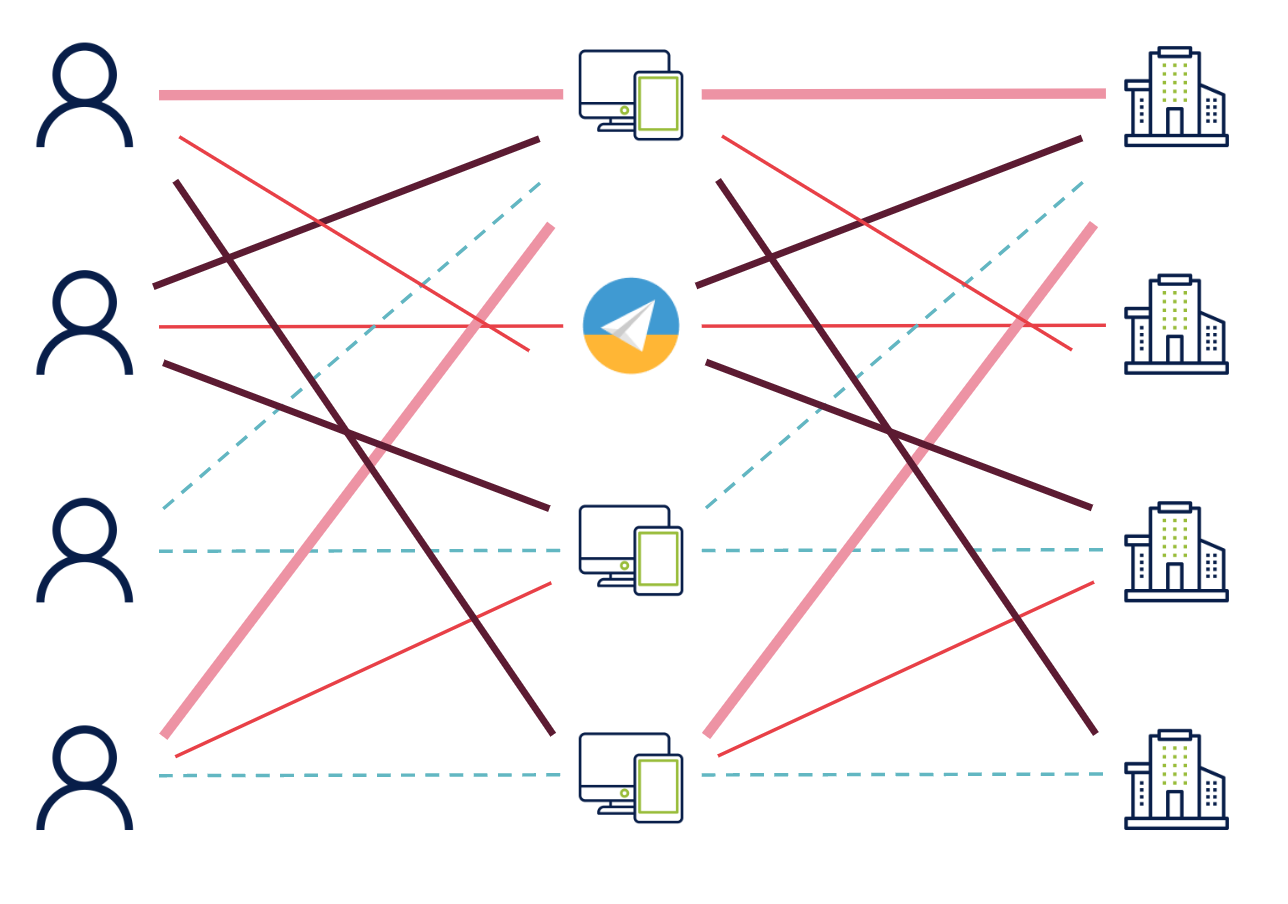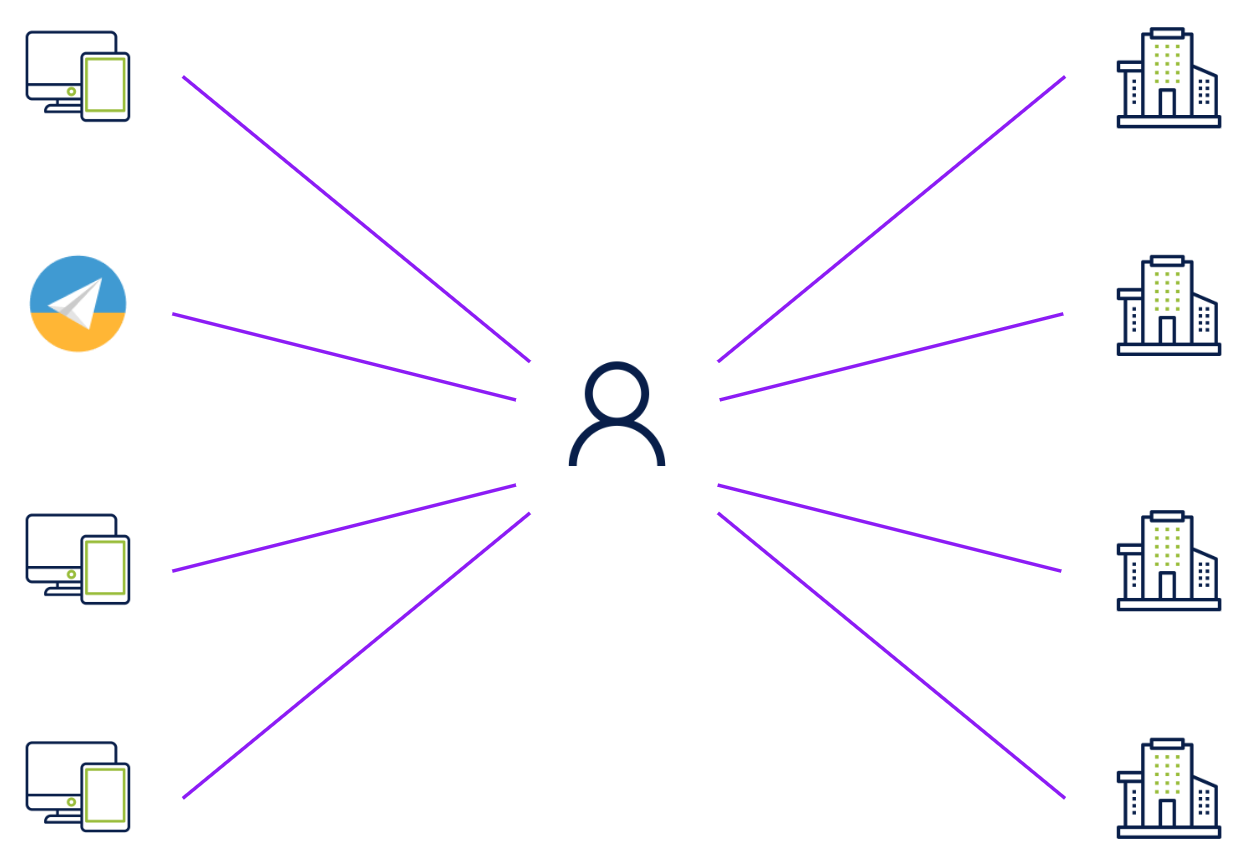Running example: My Move
Dive right in
In our experience, use.id is best explained using an example. That is why we start with explaining the imaginary My Move app. If you want to learn more about use.id and Solid, please check out the other guides in this category.
My Move: an ambitious idea
If you have ever moved house, you know that it's a hassle to notify every company or institution of your address change. If you don't your mail will keep coming to the address you've previously lived at.
That is why a group of friends decided to found a start-up about an app called My Move: a platform that people can use to easily notify companies and institutions of their address change.

Using My Move, you can easily send your new address to the companies of your choice.
After a lot of market research and a lot of positive feedback, the founders left their job and decided to persue this idea.
Welcome to the nightmare of becoming yet another datahub
My Move would become yet another datahub: the app would be one of many apps that facilitate data sharing between several parties.

My Move as yet another datahub. Each user would have yet another account at an app that stores data about him or her with yet anther login method. Each company would have to integrate with yet another API and enter into yet another data processing agreement.
Because the founders thoroughly prepared this venture by researching the market and designing their product, they knew that becoming yet another data sharing app would lead to a lot of hurdles...
- Hurdle 1: Convincing people
My Move would not be the only application that people interact with. For each application, people have to create yet another account. For each account they create, they have to remember yet another password and loose another bit of control over their personal. It won't be easy to convince users to take these steps and to put their trust in My Move. - Hurdle 2: Convincing companies
My Move is not the only datahub that companies interact with. For each datahub, companies have to integrate with a different API and enter into a seperate Data Processing Agreement. The founders know that it wouldn't be easy to convince each company on the platform to do this. Especially in the beginning, when the number of users would be low. - Hurdle 3: Time-to-market and overhead
As a start-up it is important to get market traction as soon as possible. Time is money. Yet, just like for any other app, the My Move app requires a lot of boilerplate components: a user management portal for My Move, an interface so companies can manage user requests, handling consent and privacy metadata and so on. These boilerplate components do not add anything competitive and would waste a lot of time and effort. - Hurdle 4: Data protection risks
My Move will store a lot of sensitive data and doesn't have a lot of budget to hire security experts. Leaking personal data would mean that both people and companies loose their trust in My Move and churn.
Solid, WebIDs and use.id to the rescue
Because of Solid, WebIDs and use.id, the user becomes a standardised datahub: The person interacts with every app and every company in a unified way and decides who can access what.

With Solid and use.id, the user becomes the datahub. People will have one uniform way to login, access data about them and share it with others. Organisations enter into a data processing agreement with the user instead of the app (e.g. by asking consent) and only have one way to access data: by following the Solid protocol.
The founders of My Move are convinced: they will rely on Solid, WebIDs and use.id so they can convince people and companies more easily, reduce their time to market and mitigate several data protection risks.
- People can use their WebID to login to several apps and share access to their data with other WebIDs while keeping an overview of who has accessed their data and what they have used it for.
- Companies can use their WebIDs to let people share their data with them. This way, they don't need to have a seperate data processing agreement per app, but can simply rely on less complex bases for processing data (e.g. consent).
- My Move will be able to achieve a shorter time to market because it can reuse existing components like the use.id user dashboard and resell the use.id partner portal to their partners.
- Data protection risks are mitigated because data can be offloaded to the user.
On the next pages, you will learn how My Move has designed several user journeys like user onboarding look like when relying on Solid, WebIDs and use.id.
Updated 6 months ago